Power System Simulators &
Research Products

Introduction
Fast paced developments are taking place in the power industry which requires more resources updated with modern technology to manage the substations. Academic institutions today, need to work in close connect with the industry to provide resources with sound knowledge about the current industry scenarios to meet these requirements.
In the electrical engineering stream, the aspects of power system analysis and protection are imparted both in UG and PG level. As part of the course, students learn the load flow analysis, fault calculation.
Most of the experiments are carried out with the software simulation. However the student cannot visualize the various voltage levels of operation, the losses and the limitation on the physical distances involved.
In this connection, it is envisaged to develop a practical model of the system with the purpose of helping students in their understanding of some basic ideas in power systems. The hardware based simulation will also help the students to demonstrate the effects of different parameters on the power system with easier experiments. The hands-on experience supported with systematic training & experiments will enable the resource to place him/her with added value in the industry.
Power system hardware simulator is a sophisticated module developed with the purpose of helping students in their understanding of some basic concepts in power systems. The simulation will also help the students to demonstrate the effects of different parameters on the power system with easy experiments.

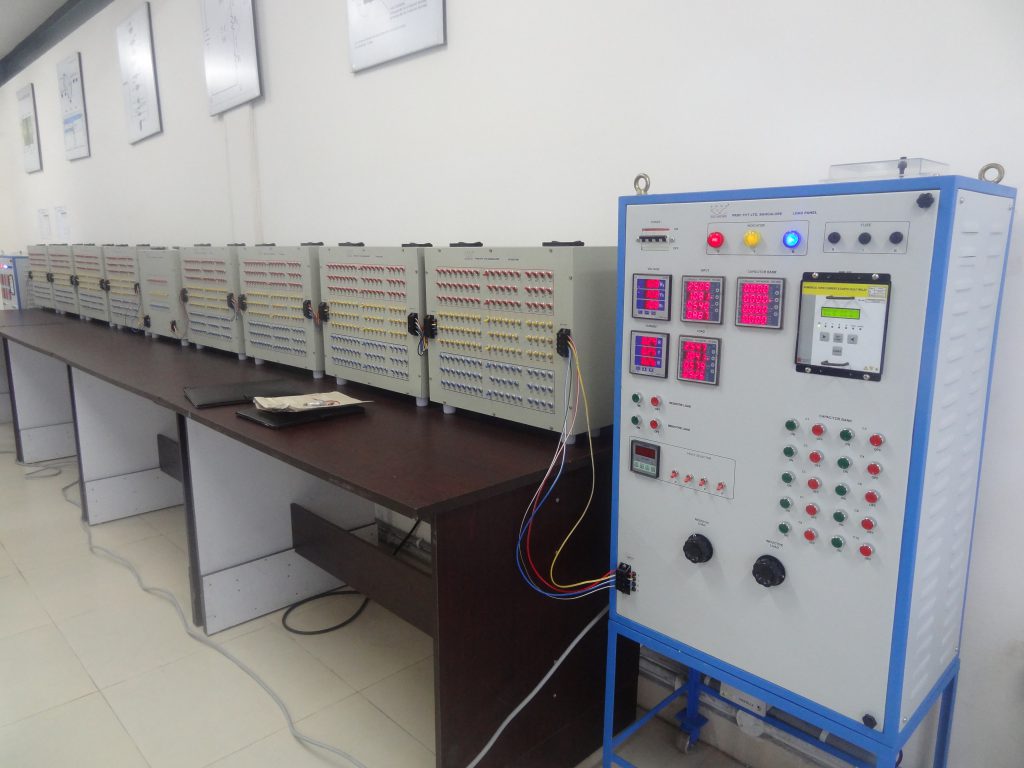
Students taking a first course in power systems often find it difficult to grasp a concept due to lack of hands on experimentation. There are many topics that are usually taught in a strictly theoretical way. Most of the times, students have difficulty envisioning how changes in the source, the load and the transmission line affect the total systems performance.
The basic definitions are understood but the total picture of how each component of a system interacts with the other is not obvious. That is where study of power system simulation allows the students to easily understand these basic ideas.
Transmission Line Simulator is a unique module designed for realistic conditions, such as over voltage, over current, and a certain magnetic coupling between the wires. The network model can be used to complete a series of experiments with transmission lines.
Configurable Features
- Transmission Line Simulator
- Transmission Line Simulator
- Resistive and Inductive Loading Facility
- Shunt / Series Capacitor Compensation
- SCADA Feature
- Over Current Relay with Relay Coordination
- Fault Simulation with Fault Classification IED
- Distance Relay Integration
- FACTS Devices Integration (SVC)
- Disturbance Recording Through IED
- Fixed Distance Pi Lines of most common conductors
- Variable Pi Lines with configurable Distance and Conductor
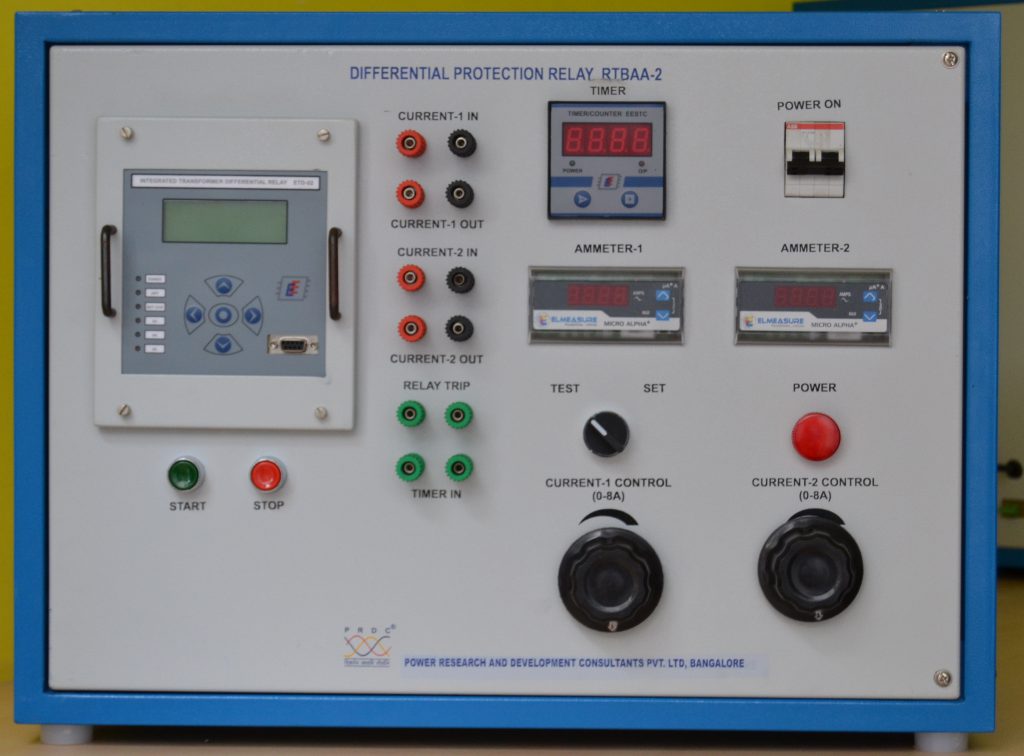
Relay test panels are sophisticated equipment designed especially for academic institutions with industrial relays and safety operational measures. Engineering colleges with UG and PG courses are constrained only to theory of Power System Protection studies.
To enable the students have a higher edge these kits includes actual protection relay along with necessary accessories. We offer customized solution for these types of kits. These kits range from the most reliable electromechanical relays to the most modern numerical relays. Our simulators are customized for different types of relays. The kit also includes inbuilt timer for recording the trip time / operating time.
Using this relay test panels, students can test the characteristics of particular relays. Test kits are designed especially for a particular relay mounted in the panel. Individual relays fitted in individual panels along with the necessary simulators and accessories facilitate separate experiments to be performed at the same time by different groups of students. Even during exams, different students can perform different experiments at the same time.
Single Function and Multifunction Test Kits –
- Over Current Protection
- Over Voltage Protection
- Under Voltage Protection
- Differential Protection
- Distance Protection
- Directional Over Current Protection
- Under / Over Frequency Protection
- Negative Sequence Protection
- Motor Protection
- Generator Protection
- Buchholz Relay Test Kit
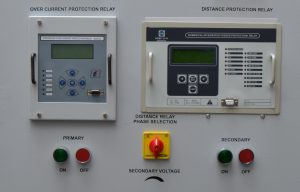
Relay Coordination kits ranges from a basic two relay system for imparting basic education to UG and PG students to complex networks for research purpose involving ring main systems. We provide kits based on the customer’s design and requirement.
- Basic Coordination Kit
- Customized Coordination Kit
Fault Simulator kit involves creation of LG, LL, LLG, LLL and LLLG faults along with facility to analyze fault currents and waveforms using disturbance recorders. Distance relay based setups enable students to understand the concept of zonal protection.
- Basic Fault Simulator
- Fault Simulator with Distance Relay
- Fault Simulator with Waveform Recording

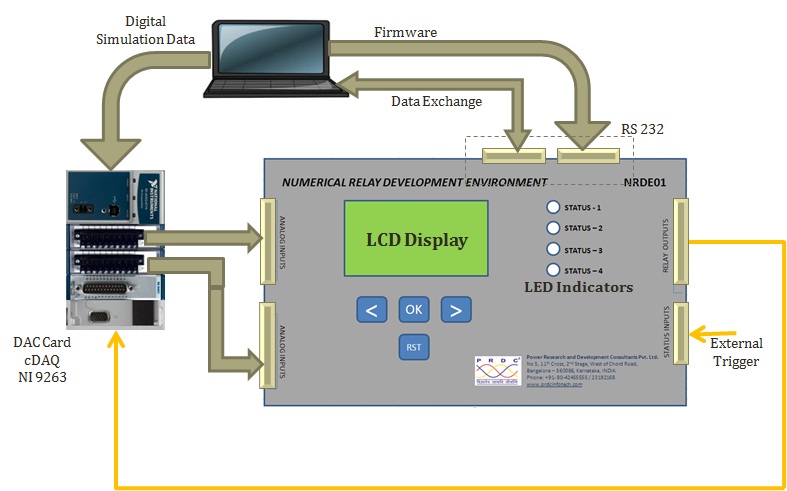
Research Scholars working on Power System Protection develop new algorithms with better characteristics. But most of these algorithms remain limited to testing within the simulated testing environment only.
For Researchers working on Power System Protection, it becomes tedious and time consuming to go through the details of developing a complete hardware system to implement the algorithm and test it in real time.
NRDE solves this problem by bridging the gap where the Researchers can directly program their algorithm to a readily available system and connect it directly to a real scenario to check its characteristics.
This module is developed with the view of providing students and practicing engineers with hands on learning experience on Substation SCADA system, and its applications to the monitoring, supervision and control of an electric power Transmission & Distribution System.
The elements of the lab can be customized based on the requirements. A variety of experiments on hardware & software components and communication protocols/interfaces can be done by the faculty and students.
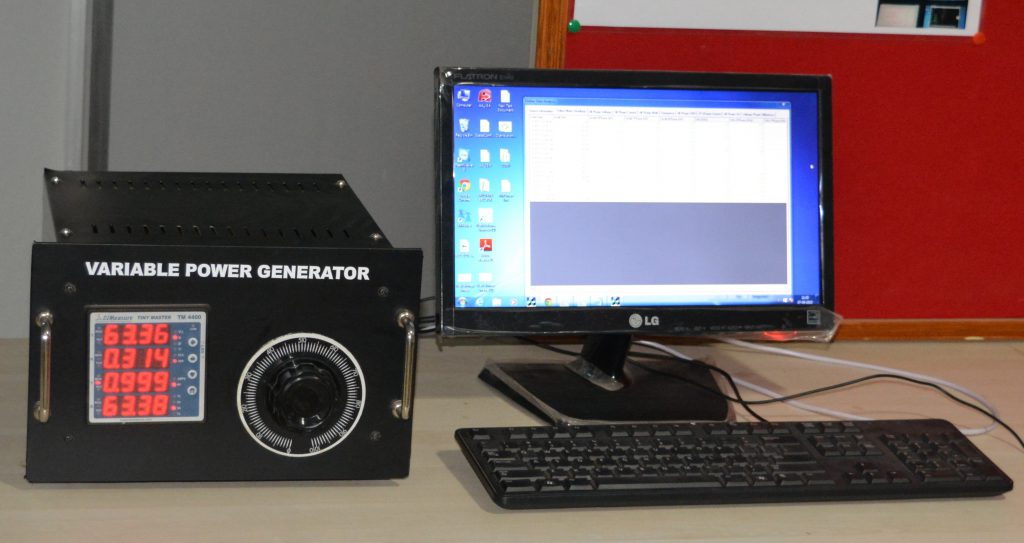

This module works as an educational as well as infrastructure management tool. Different points in the campus can be monitored and data can be gathered. Students get the real feel of working at an LDC. Operational benefits include demonstration of the distribution system automation and control.
To conduct the energy audit in terms of total energy sent from the main receiving station to the energy received at different buildings. The energy audit in different building can be done to account for the energy consumption at each building.
To generate daily, monthly and annual load variation curves and to draw the load duration curve for a given time period for a given consumer/building. To draw the load curve and conduct demand side management exercise to flatten the load curve. To arrive at the best switching sequence to minimize the losses and interruption in the secondary distribution network. To write software programs to communicate with the Field Control Unit and acquire voltage, current, power and status indications.
A Distribution Model is built to simulate the 11kV power distribution system in the Laboratory. It consists of transformer model and the load model with multiple feeders. Distribution Simulation System (DSS) is used to simulate the distribution side of Power System within a lab and yet provide enough live conditions for the students to understand the system.
Simulation includes Simulation of Fault, Voltage Regulation, Relay coordination, Transformer Loading, Demand side management and Power factor Control to name a few.
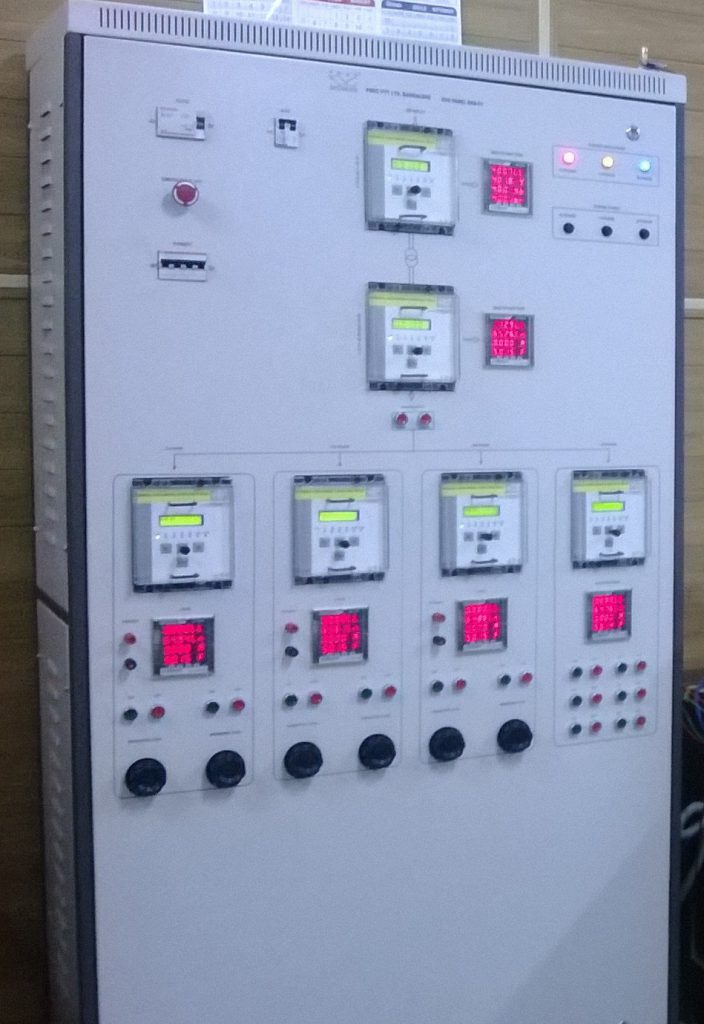
Solar Simulator involves testing of Solar PV cells and their characteristics for better understanding of the students. The inclination angle, solar intensity etc can be tested within the lab.
Wind Simulator involves testing of wind turbines within the lab for practical understanding of the students. Fixed speed and random wind generation can be achieved through the interface software where real data can be fed to simulate real life scenarios. The equipment can be customized for R&D projects.
This kit provides an advanced interface to test CTs to find out excitation current, turns ratio and winding polarity on single- and multi-ratio current transformers. PTs can be tested to find out turns ratio and error percentage. PC interface can also be provided to generate test reports.

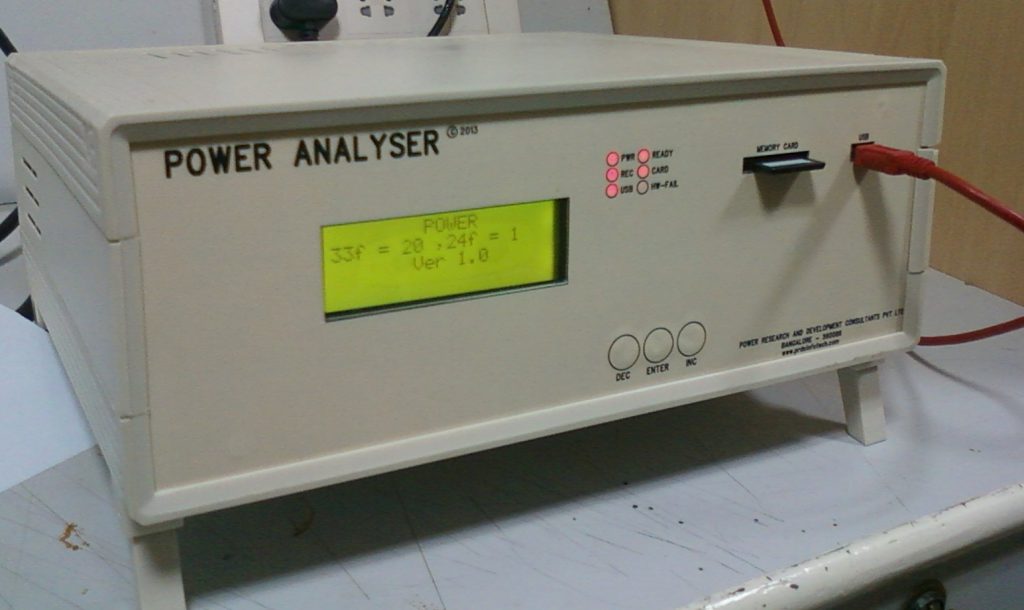
3 Voltage channels and 3 Current Channels with waveform recording, data acquisition by means sampled data in .csv format as well as harmonic analysis provides the most optimized solution for various analysis needs of academic institutions. This model can be used for imparting regular studies as well as research projects.

These equipments are equipped with 3 current generators and 4 voltage generators facilitate most types of relay testing. The additional voltage source can be configured to AC or DC to power the relay.
With voltages ranging from 0 – 300V and current ranging from 0 -20A, virtually it encompasses the testing of all types of relays. With an inbuilt timer, auxiliary contact and inbuilt meters this kit ensures that no additional equipments are required to test a relay.
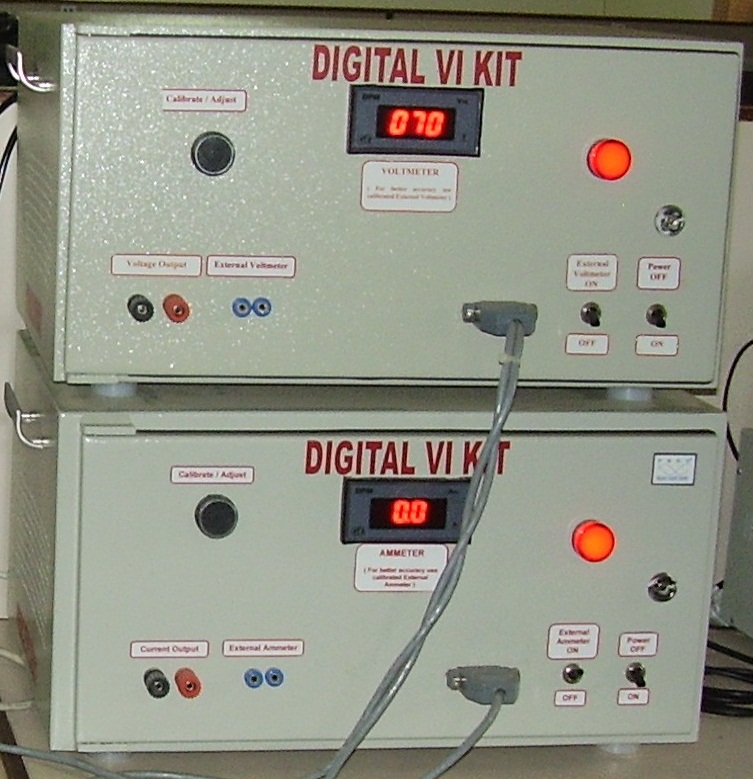
The Digital VI kits are digitally controlled Voltage and Current sources required for testing and calibration of numerical relays and energy meters. Computer based software is used to control the voltage or current.
Digital inputs and outputs can be configured through the software to set any automated testing or calibration process.Any number of Voltage and Current Channels can be configured based on the requirement.
Currently the following Voltage and Current Ranges are available-
- Digital Voltage Source – 0 – 300 V (AC)
- Digital Current Source – 0 – 10 A (AC)
PRDC® being a renowned organization in the Power System domain has more than two decades of experience in this field. With extensive knowledge in various fields in this domain, PRDC® now extends its expertise in development of the academic fraternity.
Through this service PRDC® develops customized test kits, research equipments, project equipments as per the designs of the client. PRDC® also supports in implementation and validation of algorithms for research projects.
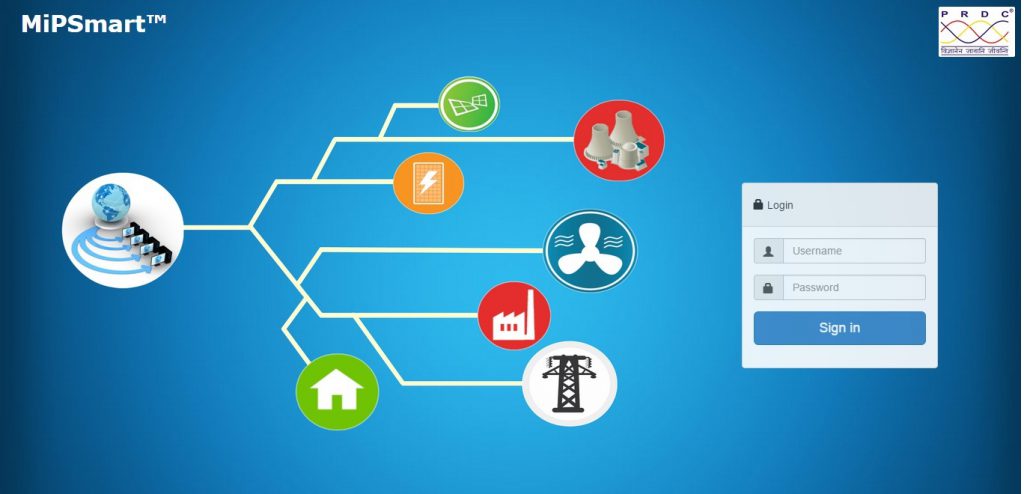
MiPSMART™ – is a web based Smart Grid Simulation environment. The product is the only one of its kind that envisages the application of the smart grid concepts in real time.
It is designed for the smart grid enthusiasts as a tool to understand the concepts, possibilities and applications of Smart Grid. Though it is aimed as a learning tool, the product design has been carried out in a fashion to accommodate the real time applications thus making a useful tool for even the distribution companies to keep track of the consumer usage, and perform various other actions like encouraging them to reduce the usage or in other terms to effectively manage their loads.
